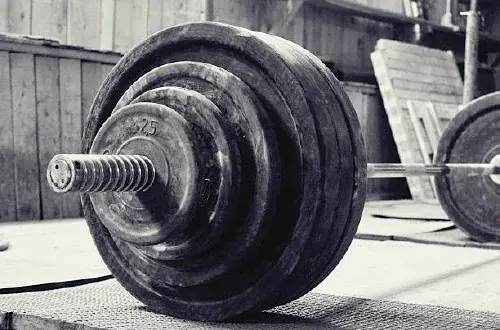How Long Should You Rest Between Sets?
- michael Kokko
- Oct 21
- 3 min read
Understanding Rest Times for Strength, Hypertrophy, Endurance & Power
When it comes to building strength, size, or endurance, the time you spend resting between sets can dramatically affect your results. Rest periods influence how your muscles recover, how your nervous system responds, and how much total work you can perform.
Choosing the right rest time isn’t random — it’s a tool. Here’s how to use it strategically to get the most from your workouts.
1. Strength Training
Rest: 2–5 minutes | Reps: 1–6 per set | Load: 85–100% of 1RM
When training for maximum strength, your body relies heavily on the ATP-PC energy system, which provides quick bursts of energy for short efforts (about 10–15 seconds). It takes several minutes to fully replenish this system, which is why strength training demands longer rest periods.
Why this works:
Restores nervous system readiness for maximal lifts.
Allows full recovery of ATP-PC stores.
Improves technique and load capacity per set.
Example Workout:
Squats or Deadlifts → 4–6 sets of 2–5 reps → Rest 3–5 minutes
Longer rest = higher strength output. Strength work relies on full recovery between heavy sets.

2. Hypertrophy (Muscle Growth)
Rest: 60–90 seconds | Reps: 8–15 per set | Load: 65–80% of 1RM
For muscle growth, the sweet spot combines tension, fatigue, and volume. Shorter rests maintain moderate fatigue and drive up metabolic stress, one of the main triggers for hypertrophy.
Why this works:
Increases growth hormone and anabolic signalling.
Keeps muscles under constant tension.
Builds metabolic fatigue while maintaining form.
Example Workout:
Dumbbell Press → 4 sets of 10 - 12 reps → Rest 75 seconds
Moderate rest = maximum muscle growth. Enough recovery to lift hard, but short enough to keep the pump.
3. Muscular Endurance
Rest: 30–60 seconds | Reps: 15 –20+ per set | Load: 40–60% of 1RM
Endurance work develops your muscles’ ability to sustain repeated contractions. Short rest times increase cardiovascular demand and enhance your body’s aerobic and oxidative recovery systems.
Why this works:
Improves capillary density and oxygen efficiency.
Builds fatigue resistance and recovery capacity.
Keeps heart rate elevated, boosting conditioning.
Example Workout:
Dumbbell Circuit → 4 rounds of 15–20 reps → Rest 30–45 seconds
Short rest = greater endurance. Keeps the body under controlled fatigue for conditioning and stamina.

4. Explosive Power
Rest: 3–5 minutes | Reps: 1– 6 per set | Load: 75–90% of 1RM or bodyweight
Explosive or power training (jumps, sprints, Olympic lifts) demands maximum velocity and force. Long rests ensure full nervous system recovery and energy regeneration so each rep stays sharp and fast.
Why this works:
Restores neuromuscular function between explosive efforts.
Maintains high bar speed and force production.
Prevents CNS fatigue that slows reaction time.
Example Workout:
Power Clean → 5 sets of 3 reps → Rest 3–4 minutes
Long rest = high velocity. Explosive training needs full recovery for speed and power consistency.

5. Conditioning or Circuit Work
Rest: 0–30 seconds | Reps: 10–20 per move or timed sets
For conditioning or fat loss, rest is kept to a minimum to maximize heart rate, calorie burn, and endurance. These sessions target your cardiovascular and muscular systems simultaneously.
Why this works:
Elevates heart rate for longer durations.
Boosts metabolic output and calorie expenditure.
Develops total-body fitness in limited time.
Example Workout:
Push-Ups → Goblet Squats → Dumbbell Rows → Plank → Repeat with minimal rest
Minimal rest = maximum conditioning. Great for improving fitness and burning calories efficiently.
Summary Table
Goal | Reps per Set | Rest Between Sets | Focus |
Strength | 1 - 6 | 2–5 min | Max load, neural recovery |
Hypertrophy | 8 - 15 | 60–90 sec | Muscle growth, metabolic stress |
Endurance | 15 - 20 | 30–60 sec | Fatigue resistance |
Power | 1 - 6 | 3–5 min | Explosiveness, speed |
Conditioning | 10–20 | 0–30 sec | Calorie burn, cardio fitness |
Final Thoughts
Rest periods aren’t just downtime — they’re part of the programming. How long you rest changes how your body adapts.
Short rests (30–90s) → More fatigue = endurance & muscle growth
Long rests (2–5min) → More recovery = strength & power
If you’re unsure what rest strategy suits your goals, I can help. We’ll tailor every session — from exercise selection to rest timing — to match your goals, fitness level, and recovery ability.




Comments